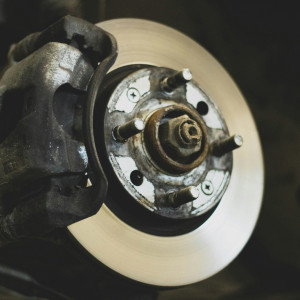Brake wear particles the greatest health threat from road transport emissions

A new study commissioned by EIT Urban Mobility, TfL and the Greater London Authority has found that brake wear releases more particulate matter into the atmosphere than tyre wear and exhaust emissions combined. Studies in London, Milan and Barcelona found that overall, Non-Exhaust Emissions (NEE) make up between 68% and 88% of PM10 and up to 78% of PM2.5 generated by road traffic. 
Brake wear is the largest source of NEE in cities, their emission being exacerbated by frequent stop-start driving. Significantly over 40% of these particles become airborne. Tyre wear is the second-largest NEE, although only 1-5% of the particles become airborne, most settling in road dust, water systems, or soil.
Good news for the air, less so for other areas of the environment. Tyre emissions are also worse in urban settings due to frequent acceleration and braking, and they increase with warmer temperature. Road wear emissions are more difficult to measure because they mix with tyre particles and dust.
While they contribute less to airborne pollution than brakes, they are still a concern, especially in cities with poorly maintained roads. Electric vehicles are obviously part of this debate and they will produce more tyre and road wear due to being around 20% heavier than their petrol or diesel equivalents. EVs aside, new cars across the board have become 21% heavier on average over the past 20 years.
On the other hand, EV's use of regenerative braking reduces brake wear emissions by over 80%. Exhaust emissions will inevitably fall over time, due the most polluting cars reaching the end of their lives and the continued shift towards electrification. Electrification will also see brake emissions will fall, albeit to a lesser degree, while tyre emission are expected to rise.

Tyre wear particles are also more dangerous than those from brake wear, with 70% of them being PM2.5. By comparison, only 40% of brake wear particles are this small.
The figure is 95% for exhaust emissions. The upcoming Euro 7 regulations, starting in late 2026, will introduce limits on brake wear emissions, with tyre wear limits following in 2028. However, the full benefits will take time, as the rules apply only to new vehicles.
Furthermore, The report expresses concern that low-wear designs could use more toxic materials, creating new health or environmental problems. The report makes a number of recommendations: City Level
Support fleet electrification.
Encourage mode-shift. Undertake city-wide NEE modelling/ monitoring. Prioritise road maintenance
National-level
Support adoption of Euro 7 and promote technical interventions. Develop guidelines on trade-offs for technical interventions. Support vehicle light-weighting
International-level
Support further research on effectiveness of new technologies and chemical composition of NEEs as well as supporting a consistent approach for data collection, processing and reporting methods for NEEs Yoann Le Petit, Thought Leadership manager at EIT Urban Mobility and author of the study said: 'Only a coordinated approach, spanning regulation, innovation and behavioural change, will be effective in reducing this under-recognised form of pollution. Cities have the opportunity to make a difference."'
The full report can be downloaded here[1]
References
- ^ can be downloaded here (www.eiturbanmobility.eu)